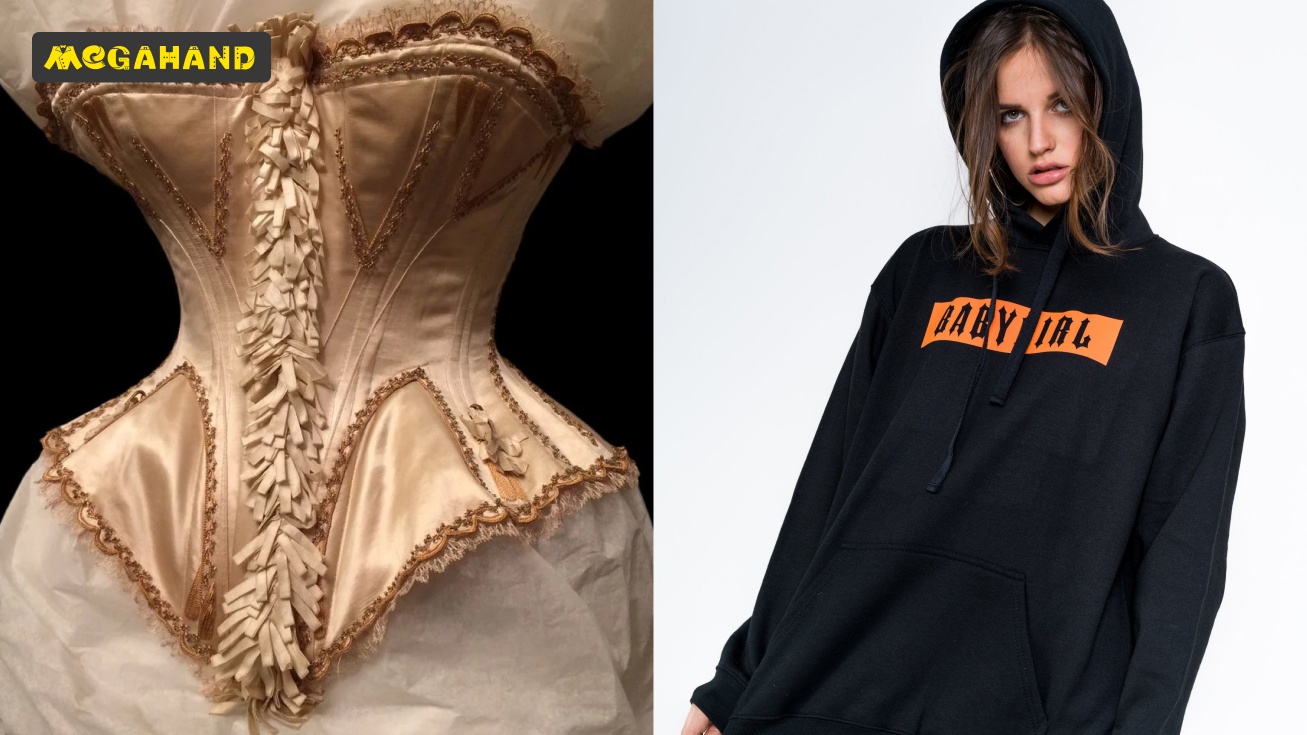Fashion is more than just clothes. It is a mirror of the era, reflecting social norms, technologies, aesthetic ideals and, of course, attitudes towards the human body. To trace the evolution of women's fashion means to understand how ideas about beauty have changed and what role clothing has played in shaping and even deforming the female figure over the centuries. From rigid corsets that tightened the waist to unnatural sizes to modern loose silhouettes, this history is full of dramatic changes.
The era of the corset, which dominated for several centuries, was perhaps the most striking example of how clothing dictated the shape of the body. The ideal was considered to be a wasp waist, a lush bust and rounded hips. Corsets, made of dense materials using whalebone, metal or bone, were real tools of transformation. They not only created the desired silhouette, but also influenced posture, gait and even internal organs. Wearing a corset was an integral part of a woman's life in high society, a symbol of status and submission to strict beauty standards.
The beginning of the 20th century brought the first echoes of change. Fashion designers such as Paul Poiret offered looser silhouettes, heralding the liberation from corsets. World War I accelerated this process, forcing women to take on new roles and need more practical clothing. The era of the "roaring twenties" finally said goodbye to the corset. The "garcon" figure came into fashion - straighter, androgynous, with a low waist and flat chest. Dresses became shorter, skirts - looser, and the Charleston dance demanded freedom of movement incompatible with rigid frames.
The middle of the century brought new ideals. The post-war years were marked by the emergence of Christian Dior's "New Look", which brought back into fashion the accentuated waist and full skirts, but without returning to extreme corseting. In the 50s, the "hourglass" figure was relevant, but it was achieved mainly through the cut of dresses and jackets, and not through strict underwear correction.
The 60s and 70s became a period of experimentation and rejection of strict rules. Fashion became more diverse, mini-skirts, trousers, and loose tunics appeared. Hippie culture promoted naturalness and comfort. The body ceased to be an object of strict correction, individuality and convenience came to the fore.
The 80s and 90s brought even more diversity: from voluminous shoulders and "power" suits to grunge and minimalism. During this period, a variety of fashion trends coexisted, and everyone could choose what they liked. The body was still not subject to strong deformation by clothing, although fitness culture began to actively influence the desired forms.
Today's fashion values comfort, functionality and self-expression. Loose silhouettes, oversized, sporty style, and, of course, hoodies - all this reflects the desire for convenience in everyday life. Clothes are not designed to change the body so much as to emphasize its natural beauty and provide freedom of movement. However, the influence of fashion on body perception remains, manifested in trends for certain body types, often supported by the fitness industry and social networks.
Tracing this path from the corset to the hoodie, we see how not only styles have changed, but also the attitude to the female body. You can study the history of fashion not only from books and pictures, but also in practice. In our Megahand store in Rustavi, Georgia, you can find items that are living witnesses of these changes. Second-hand clothes give a unique opportunity to touch the fashion of past decades, understand the cut, fabrics and feel how clothes were worn in different eras.
Visiting Megahand is like traveling through time. Here you can find classic silhouettes reminiscent of the elegance of the mid-20th century, as well as bright items from the 80s or comfortable hoodies from modern collections. This is a great opportunity to put together a wardrobe that not only matches current trends, but also tells its own story, inspired by the great evolution of women's fashion. Come and discover how the world of fashion and ideas about beauty have changed in the Megahand concept - a place where every item has its own story and low prices make fashion accessible.
Frequently asked questions about the evolution of women's fashion and second-hand
-
Why did fashion change body shapes so much in the past?
In the past, fashion often reflected social and cultural ideals, status symbols and ideas about femininity. Strict body correction (for example, with the help of corsets) was a way to conform to these ideals and demonstrate belonging to a certain class.
-
How does Megahand second-hand help us understand the history of fashion?
At Megahand you can find clothes from different eras, from vintage dresses to modern items. Trying on and studying the cut, fabrics and details of such clothes, you can clearly see how styles and silhouettes have changed over the decades.
-
Can you find things at Megahand that remind you of different stages of fashion?
Yes, Megahand’s assortment is constantly updated and includes clothes of various styles and ages. Here you can find both elements that refer to classic silhouettes and more modern trends, including comfortable hoodies and oversized ones.
-
Does second-hand affect the attitude to fashion and consumption?
Buying clothes at a second-hand store promotes more conscious consumption, prolongs the life of things and allows you to experiment with styles and eras without large expenses. This makes fashion more accessible and environmentally friendly.


